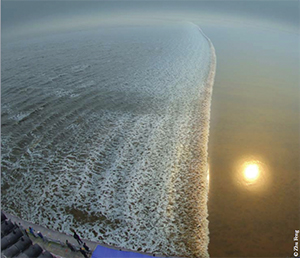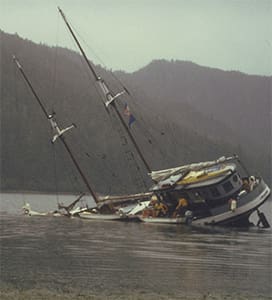In the 1980s, Jonathan White ran the educational operation that he founded called The Resource Institute. The operation was based on a former halibut boat named Crusader that was built in Tacoma in 1923. White’s group did environmental seminars in the Pacific Northwest, from Seattle to southeast Alaska. Then an incident aboard Crusader changed things for White and sent him off on a long quest that ended in a major new book on the importance of the tides.
While anchored for the night in Alaskan waters, Crusader’s anchor dragged and the boat went hard aground on a falling tide. Hours later when the tide returned, the boat remained stuck in the mud and the flood tide inundated the vessel. Eventually Crusader was refloated, but the grounding made a major impression on White and pushed him to learn as much as he could about tides — both the mechanism that drove them and ways people have imbued them with cultural power. The result of his years of travel and study is a new book called Tides: The Science and Spirit of the Ocean, published by Trinity University Press.
“I kind of uncovered the subject as I dove deeper,” White said when I spoke to him after a talk at the University of Southern Maine in Portland. “I was surprised at how poetic and mysterious it was. I kept discovering more mind-boggling facts about tides.”
 |
|
The tidal bore sweeping up China’s Qiantang River. |
|
Jonathan White |
White traveled all over the globe, seeking out places where the tides are unusual. Places like the Qiantang River in China, which has a spectacular tidal bore that sweeps upriver with each flood tide; or the Bay of Fundy with its massive 54-foot tides; or Mont St. Michel in France, which finds itself alternately a part of the mainland and then an island with each cycling of the tide.
White was granted a special audience with the St. Michel monks to get their spiritual appreciation of tides, yet White also consulted with the biggest names in tide research like Walter Munk of the Scripps Institute of Oceanography and had the entire book peer reviewed for accuracy. (A full review of Tides is coming in the next issue.)
Most sailors have put a boat aground at some point in their sailing lives. White took his grounding and turned it into a book that explores the mysterious ebb and flow of the globe’s waters.

